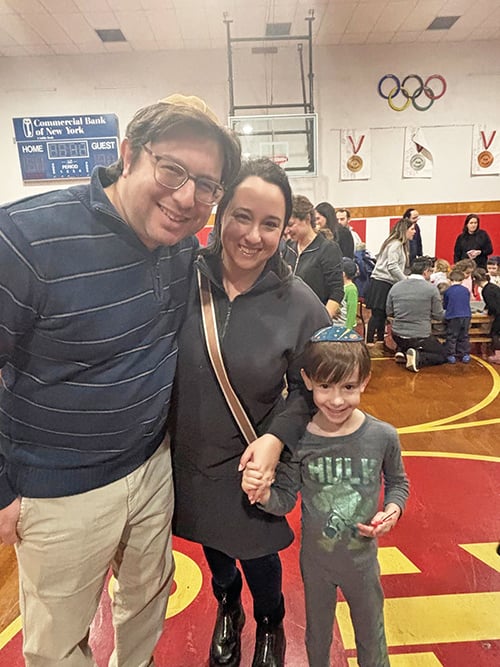Dear Dr. Maslow,
We decided to start trying for a family and I’m so confused. I’ve read about the “fertile window,” but I’m embarrassed to say I don’t really know what that means or how to know when it is! Searching online has just made me more overwhelmed. Can you help?
Sincerely,
When Is My Window
Dear When Is My Window,
Firstly, congrats on taking this exciting step in your relationship! Let’s first define the “fertile window.” In a natural menstrual cycle, the body will select one egg to grow for a potential pregnancy. When the egg is ready, the body will signal its release—called ovulation. Over the next 24-48 hours, the egg will travel from the ovary to the fallopian tube, where it is available for fertilization. If fertilization does not occur, a new cycle begins approximately 12-14 days later. People refer to the 24 hours before and after ovulation as the “fertile window” since this is the only time during the cycle when the egg is available for fertilization.
Cycle tracking is the most straightforward way of identifying if and when someone is ovulating. This typically works best for women with regular cycles, i.e., the length of time from the first day of one cycle to the first day of the next is relatively consistent from cycle to cycle. Generally, you can expect to ovulate around two weeks before the next cycle. So, for most women with a 28-ish day cycle, ovulation will fall around Day 14 or mid-cycle. However, the “fertile window” will be later in those with longer cycles. For example, a 35-day cycle would put ovulation around day 21 rather than in the mid-cycle. There are several apps that assist with tracking, but in reality an old-fashioned calendar is all that is needed.
In addition to cycle tracking, there are several ways to identify physiologic changes that coincide with ovulation. Ovulation causes a slight rise in body temperature, heart rate, skin perfusion, and other detectable biological changes. You can try basal body temperature tracking, where you record your temperature every morning, looking for a slight increase in temperature after ovulation. Some wearable fitness trackers will also monitor biometric changes like heart rate and skin perfusion, and use the data to identify ovulation and predict upcoming cycles. Another method involves periodically checking the consistency of cervical mucus, which takes on a different character around ovulation. Additionally, some women have “mittelschmerz,” a German term meaning “middle pain,” which some women appreciate as mild pelvic discomfort, usually on one side or the other right around ovulation. (Significant pain should be addressed with a physician.)
One limitation of tracking physiologic changes is that they only identify ovulation after it has happened, which means a portion of the “fertile window” has already passed. However, together with other tracking tools, this can help predict ovulation from cycle to cycle. The only method that alerts you before ovulation is an ovulation predictor kit (OPK). These are usually sold in drugstores or online and utilize urinary testing for luteinizing hormone (LH), which surges in the blood and urine right before ovulation. These kits can also sometimes identify rises in estrogen that occur in advance of the “LH surge”—which they usually designate as “high” versus “peak” fertility. The kits vary in quality and don’t always catch a surge for everyone or every cycle. You may still be ovulating, even if you don’t get a positive OPK. A regular menstrual cycle is the best indication that ovulation is happening, even if you aren’t exactly sure when.
Here are a few key notes to consider. Women with irregular or long cycles may find it harder to identify the “fertile window” with some of these methods. In these cases, it may be worth speaking with your doctor, especially if your cycles vary by more than five days from cycle to cycle or are longer than 40 days. Secondly, those keeping hilchot niddah generally go to the mikvah right before their “fertile window.” However, women with short, or whose periods last for longer than seven days, may ovulate before the mikvah, while those with longer cycles may ovulate well after the mikvah. If you’re concerned about where your ovulation falls with respect to going to the mikvah, I’d recommend you start a conversation with a rav or yoetzet. Lastly, many helpful and high-tech apps are available to assess and track ovulation. When utilizing these apps, please be mindful of what personal data they collect and how they are shared.
Ultimately, you don’t necessarily need to precisely identify your “fertile window” with every cycle to conceive. Sometimes this can create more stress than it is worth. As long as you are not entirely missing it each cycle, you should have plenty of opportunities to conceive over the course of a few months. Most couples will conceive after six to12 months without significant tracking or intervention. Of course, if you have any concerns, discussing them with a physician may be the best next step.
Dr. Bat-Sheva L. Maslow, MD, MSCR, is a reproductive endocrinologist and an expert on the intersection of reproductive medicine and Jewish life. To schedule an appointment with her at Reproductive Medical Associates (RMA) of New Jersey’s Englewood or the brand new Jersey City location, see www.rmanetwork.com/NJ. You can invite Dr. Maslow to speak in your community or learn more about her educational projects on her website www.batshevamaslow.com and @blmaslowmd on Instagram.













